Transformer Purpose Explained: Why They Matter in Power Systems
Have you ever wondered how electricity from power plants reaches your home safely? The answer lies in a crucial device called a transformer. But what exactly do transformers do, and why are they so important in our power systems?
A transformer is an electrical device that transfers energy between circuits through electromagnetic induction. Its primary purpose is to step voltage up or down, allowing efficient long-distance transmission and safe distribution of electricity to homes, businesses, and industries.
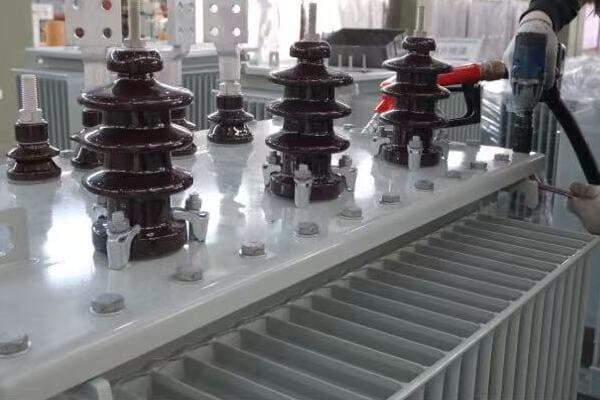
In this article, I’ll explain the purpose of transformers in power systems, their different types, and why they’re crucial for our modern electrical infrastructure. Whether you’re a curious homeowner or an aspiring engineer, understanding transformers will give you valuable insights into how our power grid works.
What Is a Transformer and What Does It Do?
Have you ever seen those large, cylindrical objects on utility poles or in electrical substations and wondered what they are? Those are transformers, but what exactly do they do in our power systems?
A transformer adjusts voltage levels between different parts of the power system. It allows high-voltage transmission over long distances, reducing energy loss, and ensures safe, low-voltage delivery to end users. Without transformers, modern electrical grids would be inefficient and unstable.
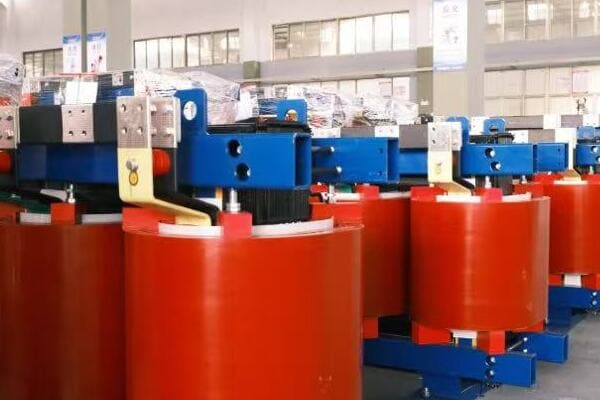
Understanding Transformer Basics
Let’s break down the key aspects of transformers:
1. Core Components
Every transformer has:
- A primary coil (input)
- A secondary coil (output)
- An iron core
I remember my first hands-on experience with a transformer during my engineering studies. Seeing how a simple arrangement of coils and an iron core could change voltage levels seemed almost magical.
2. Working Principle
Transformers operate on:
- Electromagnetic induction
- Faraday’s law of induction
- Alternating current (AC) only
3. Voltage Transformation
Transformers can:
- Step up voltage (increase it)
- Step down voltage (decrease it)
- Maintain the same voltage (isolation transformers)
4. Power Conservation
An important principle:
- Power in equals power out (minus small losses)
- As voltage changes, current changes inversely
Here’s a simple table explaining voltage and current changes in transformers:
| Type | Voltage Change | Current Change |
|---|---|---|
| Step-up | Increases | Decreases |
| Step-down | Decreases | Increases |
| Isolation | No change | No change |
In my years of working with power systems, I’ve seen transformers in various sizes and applications. One particularly memorable project involved installing a massive substation transformer. Its ability to step down voltage from 500kV to 69kV was crucial in bridging the gap between transmission and distribution systems.
The efficiency of transformers never ceases to amaze me. Modern power transformers can be up to 99% efficient, which is crucial when dealing with large amounts of energy. I once calculated the energy savings from upgrading an old transformer to a new, high-efficiency model. The reduction in losses over its lifetime was equivalent to powering hundreds of homes for a year.
One fascinating aspect of transformers is their role in electrical isolation. In a recent project for a sensitive research facility, we used isolation transformers to protect delicate equipment from power line disturbances. This application showcased how transformers not only change voltage but also provide a crucial safety function.
The concept of turns ratio in transformers is fundamental to their operation. I often use the analogy of gears in a bicycle when explaining this to newcomers. Just as different gear ratios change the relationship between pedaling speed and wheel speed, the ratio of turns in transformer coils determines the voltage change.
Transformer design has come a long way since their invention. In a recent development project, I worked with advanced core materials that significantly reduced energy losses. These new materials, like amorphous metal alloys, are pushing the boundaries of transformer efficiency and performance.
The challenge of cooling transformers, especially large ones, is an ongoing area of innovation. I’ve been involved in implementing advanced cooling systems using natural ester fluids instead of traditional mineral oil. These biodegradable fluids not only improve cooling efficiency but also reduce environmental risks.
Lastly, the role of transformers in handling harmonics is becoming increasingly important with the proliferation of non-linear loads in our power systems. In a recent industrial project, we had to design special K-rated transformers to handle the harmonic-rich environment created by variable frequency drives and other electronic equipment.
Understanding what transformers are and how they work is crucial for anyone interested in power systems. These devices, often hidden in plain sight, play a vital role in making our modern, electrified world possible. From the massive units in substations to the small ones on utility poles, transformers are the unsung heroes of our electrical infrastructure, quietly performing the crucial task of voltage transformation that keeps our power flowing safely and efficiently.
Why Transformers Are Essential in Power Transmission and Distribution?
Have you ever wondered how electricity travels long distances from power plants to your home without significant losses? The answer lies in transformers, but why are they so crucial in power transmission and distribution?
**Transformers play a central role in every stage of the electrical grid:
- Increase voltage for long-distance transmission (step-up transformers)
- Decrease voltage for safe local distribution (step-down transformers)
- Isolate systems for safety and maintenance
- Balance loads and reduce voltage drops
They ensure electricity reaches homes and businesses reliably.**
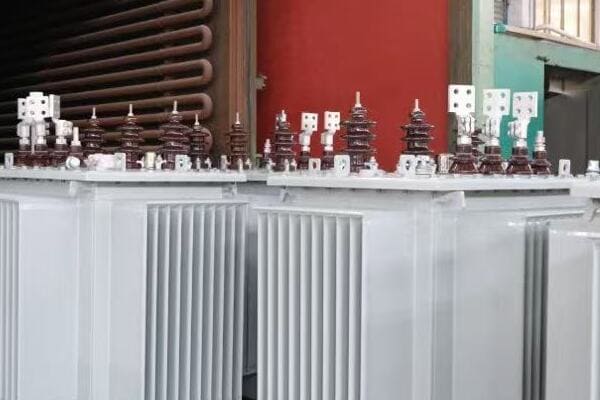
The Critical Role of Transformers in Power Systems
Let’s explore why transformers are indispensable:
1. Efficient Long-Distance Transmission
Transformers enable:
- High voltage transmission to reduce power losses
- Lower current in transmission lines
- Smaller, more cost-effective conductors
I once worked on a project to upgrade a long-distance transmission line. By increasing the voltage using transformers, we reduced power losses by over 50%, significantly improving efficiency.
2. Safe Distribution to End Users
Transformers ensure:
- Voltage reduction for local use
- Safe power levels for homes and businesses
- Compatibility with consumer electrical devices
3. System Flexibility
Transformers provide:
- Ability to interconnect different voltage systems
- Support for various distribution configurations
- Adaptability to changing load demands
4. Power Quality Management
Transformers help in:
- Voltage regulation
- Harmonic mitigation
- Phase angle adjustment
Here’s a table showing typical voltage levels in power systems:
| Stage | Voltage Level | Transformer Role |
|---|---|---|
| Generation | 10-25 kV | Step-up for transmission |
| Transmission | 100-765 kV | Long-distance power transfer |
| Sub-transmission | 33-160 kV | Regional distribution |
| Distribution | 4-33 kV | Local area supply |
| Consumer | 120/240 V | Final step-down for use |
In my experience, the importance of transformers in power systems cannot be overstated. I recall a project where we had to design a power supply for a remote industrial facility. The use of step-up transformers at the source and step-down transformers at the facility made it economically feasible to transmit power over 100 miles with minimal losses.
One fascinating aspect of transformer use in power systems is their role in grid interconnection. I’ve worked on projects connecting different regional grids, where transformers were crucial in matching voltage levels and synchronizing phases. This interconnection enhances grid reliability and allows for more efficient power sharing between regions.
The challenge of maintaining voltage stability across vast networks is another area where transformers shine. In a recent smart grid project, we implemented on-load tap-changing transformers that could dynamically adjust voltage levels in response to changing load conditions. This adaptive approach significantly improved power quality and reduced the risk of voltage collapse.
Transformers also play a critical role in integrating renewable energy sources into the grid. I’ve been involved in designing transformer systems for large wind farms, where the ability to step up voltage from the generators to transmission levels is crucial for efficiently delivering power to distant load centers.
The concept of transformer redundancy is vital in ensuring grid reliability. In critical substations, I often design systems with multiple transformers that can share or take over loads in case of failures. This N+1 or even N+2 redundancy significantly enhances system resilience.
Energy efficiency in transformers is an area of ongoing innovation. I’m currently working on a project implementing high-efficiency amorphous core transformers in a distribution network. While more expensive initially, these transformers can reduce energy losses by up to 70% compared to traditional designs, offering significant long-term savings.
The role of transformers in power factor correction is another crucial aspect. In industrial settings, I’ve implemented special transformers with built-in capacitor banks to improve power factor. This not only enhances system efficiency but also helps customers avoid penalties for poor power factor.
Lastly, the importance of transformers in emergency response and grid restoration cannot be overlooked. I’ve been involved in developing mobile transformer substations that can be quickly deployed to restore power in areas affected by natural disasters or equipment failures. These units demonstrate the flexibility and critical nature of transformers in maintaining our power infrastructure.
Transformers are essential in power transmission and distribution because they enable the efficient, safe, and flexible operation of our electrical grid. From enabling long-distance power transmission to ensuring safe voltage levels for end-users, transformers are the backbone of our power systems. As we continue to evolve our energy infrastructure, particularly with the integration of renewable sources and smart grid technologies, the role of transformers in shaping a reliable and efficient power network will only grow in importance.
Step-Up vs Step-Down Transformers: Different Roles, Same Mission?
Have you ever wondered why we need different types of transformers in our power systems? The distinction between step-up and step-down transformers is crucial, but what exactly sets them apart, and how do they contribute to the same overall mission?
**Type | Function | Where It’s Used
Step-Up | Increases voltage | Power plants → transmission lines
Step-Down | Decreases voltage | Substations → neighborhoods, factories
Both types work together to move power efficiently across the grid.**
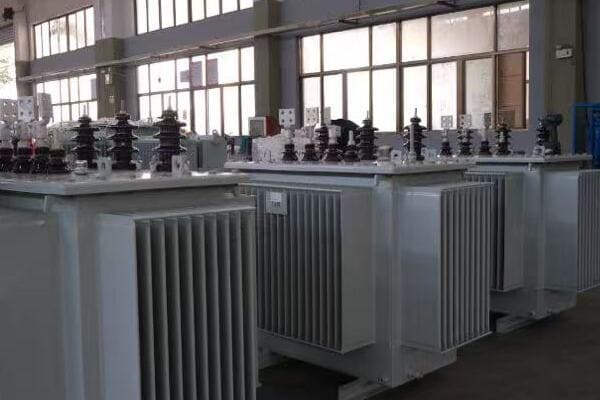
Understanding Step-Up and Step-Down Transformers
Let’s explore the key differences and similarities:
1. Step-Up Transformers
Characteristics and uses:
- Increase voltage for transmission
- Located near power generation plants
- Reduce current in transmission lines
I once worked on a project at a hydroelectric plant where we installed massive step-up transformers. Seeing them boost the generator’s 13.8kV output to 500kV for long-distance transmission was impressive.
2. Step-Down Transformers
Features and applications:
- Decrease voltage for distribution and use
- Found in substations and local distribution systems
- Increase current for end-user consumption
3. Shared Mission
Common goals of both types:
- Efficient power transfer
- Minimize power losses
- Enable a flexible and reliable grid
4. Design Differences
Key distinctions:
- Winding ratios (more turns in secondary for step-up, fewer for step-down)
- Insulation requirements (higher for step-up due to higher voltages)
- Cooling systems (often more robust in large step-up transformers)
Here’s a comparison table of step-up and step-down transformers:
| Aspect | Step-Up Transformer | Step-Down Transformer |
|---|---|---|
| Primary Function | Increase voltage | Decrease voltage |
| Typical Location | Power plants | Substations, neighborhoods |
| Winding Ratio | Secondary > Primary | Primary > Secondary |
| Current Change | Decreases | Increases |
| Main Benefit | Reduces transmission losses | Enables safe local use |
In my experience, the interplay between step-up and step-down transformers is fascinating. I recall a project where we designed a comprehensive power system for a new industrial park. We used step-up transformers at the local power plant to feed into the high-voltage transmission network, then a series of step-down transformers at various substations to gradually reduce the voltage to usable levels for different industrial consumers.
One interesting aspect of transformer design is how the same basic principles apply to both step-up and step-down types, just in reverse. In a recent educational workshop I conducted, we disassembled both types of transformers. It was enlightening for participants to see how the core design remained similar, with the main difference being in the winding ratios.
The challenge of managing voltage regulation differs between these transformer types. In step-up transformers, I’ve implemented advanced tap-changing mechanisms to adjust output voltage based on grid conditions. For step-down transformers, especially in distribution networks, we often use voltage regulators to maintain stable voltages despite fluctuating loads.
Efficiency considerations are crucial for both types but manifest differently. In a recent project upgrading a large step-up transformer at a power plant, we focused on minimizing core losses to improve overall plant efficiency. In contrast, for distribution step-down transformers, our focus was on reducing copper losses to improve efficiency under varying load conditions.
The impact of harmonics is another area where step-up and step-down transformers face different challenges. In step-up applications, especially with renewable energy sources like wind farms, we’ve had to design transformers to handle the harmonics generated by power inverters. For step-down transformers in urban distribution networks, the challenge is often dealing with harmonics from non-linear loads like electronics and LED lighting.
Cooling systems are a critical aspect of transformer design, particularly for large step-up units. I’ve worked on implementing advanced cooling techniques, including forced oil and water cooling, for massive step-up transformers at power plants. Step-down transformers, while also requiring effective cooling, often use simpler systems due to their generally smaller size and lower heat generation.
The role of these transformers in grid stability is significant. In a recent smart grid project, we integrated intelligent control systems into both step-up and step-down transformers. This allowed for real-time adjustment of voltage levels and reactive power compensation, enhancing overall grid stability and power quality.
Lastly, the environmental impact of transformers is an increasing concern. I’m currently involved in a project to develop more environmentally friendly insulating fluids for both types of transformers. This work aims to reduce the environmental risks associated with traditional mineral oil, particularly in sensitive ecological areas.
Understanding the roles of step-up and step-down transformers is crucial for grasping how our power systems function. While they serve different purposes in the power transmission and distribution chain, both types are essential for creating an efficient, reliable, and safe electrical grid. As we continue to evolve our energy infrastructure, particularly with the integration of renewable sources and smart grid technologies, the importance of these transformers in managing our complex power networks will only grow.
How Transformers Improve Grid Efficiency and Safety?
Have you ever wondered how our power grid manages to deliver electricity efficiently and safely across vast distances? Transformers play a crucial role in this process, but how exactly do they enhance both the efficiency and safety of our electrical systems?
**Transformers help reduce transmission losses by enabling high-voltage delivery. They also:
- Prevent overloading by balancing circuit loads
- Isolate faults to avoid grid-wide failures
- Enable smart grid technologies with adaptive voltage control
- Protect equipment through voltage regulation**
Exploring Transformer Contributions to Grid Performance
Let’s delve into how transformers enhance our power systems:
1. Efficiency Improvements
Transformers boost efficiency by:
- Enabling high-voltage transmission to reduce line losses
- Optimizing voltage levels for different parts of the grid
- Minimizing energy waste through advanced core materials
I once calculated the efficiency gains from upgrading an old transmission line with modern transformers. The reduction in line losses was equivalent to powering several thousand homes – a stark demonstration of transformer impact.
2. Safety Enhancements
Safety benefits include:
- Stepping down voltage for safe consumer use
- Providing electrical isolation between grid sections
- Incorporating protective features like fuses and circuit breakers
3. Voltage Regulation
Transformers help maintain stable voltages by:
- Using tap changers to adjust voltage ratios
- Compensating for voltage drops in long lines
- Balancing loads across phases
4. Fault Management
Transformers aid in fault protection through:
- Impedance that limits fault currents
- Rapid disconnection capabilities during faults
- Design features that contain internal faults
Here’s a table summarizing transformer contributions to grid performance:
| Aspect | Efficiency Benefit | Safety Benefit |
|---|---|---|
| High Voltage Transmission | Reduces line losses | Limits current for safer handling |
| Voltage Step-Down | Optimizes power delivery | Provides safe voltage for end-users |
| Electrical Isolation | Improves system stability | Prevents fault propagation |
| Core Design | Minimizes energy waste | Reduces risk of overheating |
In my experience, the efficiency improvements from modern transformer designs can be substantial. I recall a project where we replaced several old distribution transformers with new, high-efficiency models. The energy savings over a year were enough to power hundreds of homes, showcasing the significant impact of transformerefficiency on overall grid performance.
The role of transformers in grid safety cannot be overstated. I once worked on a project to upgrade the protection systems in a large substation. By implementing modern transformers with advanced protective relays, we significantly improved the substation’s ability to isolate faults quickly. This not only prevented widespread outages but also protected expensive equipment from damage during fault conditions.
One fascinating aspect of transformer technology is its contribution to power quality. In a recent smart grid project, we installed transformers with on-load tap changers that could dynamically adjust voltage levels in response to changing grid conditions. This adaptive voltage control helped maintain stable voltages for consumers, even as renewable energy sources with variable outputs were integrated into the grid.
The ability of transformers to balance loads across different phases of the power system is crucial for grid efficiency. I’ve been involved in designing distribution networks where careful placement and sizing of transformers helped evenly distribute loads. This load balancing not only improved overall system efficiency but also extended the lifespan of other grid components by preventing overloading.
Transformers also play a key role in reducing harmonics in the power system. In an industrial park project, we implemented specially designed K-rated transformers to handle the high harmonic content generated by variable frequency drives and other non-linear loads. This not only improved power quality for sensitive equipment but also reduced energy losses associated with harmonic currents.
The thermal management capabilities of modern transformers contribute significantly to both efficiency and safety. I recently worked on implementing an advanced cooling system for a large substation transformer. By using a combination of natural and forced oil circulation, we were able to optimize the transformer’s performance under varying load conditions while also reducing the risk of overheating and potential failures.
Transformer monitoring and diagnostics have come a long way in improving grid reliability. In a recent project, we installed online monitoring systems on critical transformers. These systems continuously monitor parameters like oil temperature, dissolved gas content, and partial discharges. This real-time data allows for predictive maintenance, helping to prevent unexpected failures and extend transformer life.
The role of transformers in supporting grid resilience is becoming increasingly important. I’ve been involved in designing mobile transformer substations that can be quickly deployed in emergency situations. These units have proven invaluable in restoring power quickly after natural disasters, showcasing how transformers can contribute to the overall robustness of our power infrastructure.
Lastly, the environmental benefits of modern transformer designs shouldn’t be overlooked. I’m currently working on a project to replace old oil-filled transformers with more environmentally friendly dry-type units in an urban substation. These new transformers not only eliminate the risk of oil spills but also offer improved fire safety, demonstrating how transformer technology can enhance both grid performance and environmental protection.
Where Are Transformers Used in the Power System?
Have you ever noticed the various sizes and types of transformers scattered throughout our electrical infrastructure? From massive substations to small boxes on utility poles, transformers are everywhere. But where exactly are they used in the power system?
**Transformers are found throughout the power infrastructure:
- Power generation stations
- High-voltage transmission lines
- Substations
- Pole-mounted or pad-mounted distribution systems
- Industrial facilities and commercial buildings
Each location uses a transformer optimized for its voltage and load needs.**

Exploring Transformer Locations in the Power Grid
Let’s take a closer look at where transformers are used and why they’re crucial at each point:
1. Power Generation Stations
At the source of electricity:
- Step-up transformers increase voltage for long-distance transmission
- Generator transformers connect power plants to the grid
- Auxiliary transformers power the plant’s own equipment
I once worked on a project at a large coal-fired power plant. The massive generator step-up transformers there could increase the voltage from 22kV to 345kV, essential for efficient long-distance power transmission.
2. High-Voltage Transmission Lines
Along the power superhighways:
- Autotransformers adjust voltage between different transmission levels
- Series transformers for line compensation and power flow control
- Potential transformers for voltage measurement and protection
3. Substations
The nodes of the power grid:
- Step-down transformers reduce voltage for distribution
- Regulating transformers maintain consistent voltage levels
- Instrument transformers for metering and protection systems
4. Distribution Systems
Bringing power to neighborhoods:
- Pole-mounted transformers for overhead lines
- Pad-mounted transformers for underground systems
- Distribution transformers that supply individual buildings or small groups of homes
5. Industrial and Commercial Facilities
At the point of use:
- Large power transformers for heavy industrial loads
- Dry-type transformers for indoor commercial applications
- Specialty transformers for specific industrial processes
Here’s a table summarizing transformer types and their locations:
| Location | Transformer Type | Primary Function |
|---|---|---|
| Power Plants | Generator Step-Up | Increase voltage for transmission |
| Transmission Lines | Autotransformers | Adjust between transmission voltages |
| Substations | Step-Down | Reduce voltage for distribution |
| Neighborhoods | Distribution | Supply power to homes and businesses |
| Factories | Industrial | Power heavy machinery and processes |
In my experience, the strategic placement of transformers throughout the power system is crucial for maintaining efficiency and reliability. I recall a project where we redesigned a city’s distribution network. By optimizing the location and size of distribution transformers, we significantly reduced line losses and improved voltage stability across the entire system.
One interesting aspect of transformer placement is how it adapts to urban development. In a recent project in a rapidly growing city, we implemented a flexible distribution system using modular pad-mounted transformers. This design allowed for easy capacity upgrades as new buildings were constructed, showcasing how transformer placement can anticipate and accommodate urban growth.
The challenge of integrating renewable energy sources has introduced new considerations for transformer placement. I’ve worked on several solar farm projects where we had to carefully design the transformer layout to handle the variable output of solar panels while maintaining grid stability. This often involved using specialized transformers with advanced voltage regulation capabilities.
In industrial settings, the placement of transformers can significantly impact production efficiency. I once consulted on a large manufacturing facility where we relocated and upgraded several transformers to better match the plant’s load distribution. This not only improved power quality but also reduced energy losses, leading to substantial cost savings for the client.
The trend towards electric vehicle (EV) charging is introducing new demands on distribution transformers. In a recent residential development project, we had to carefully consider the placement and capacity of transformers to accommodate future EV charging needs. This forward-thinking approach ensures that the power infrastructure can support the growing adoption of electric vehicles without requiring extensive upgrades later.
Transformer placement in data centers presents unique challenges due to the critical nature of the loads. I’ve been involved in designing redundant transformer systems for large data centers, where even momentary power interruptions can have severe consequences. The use of multiple transformers with rapid transfer capabilities ensures continuous power supply, even during maintenance or fault conditions.
In remote areas, the strategic placement of transformers can make a significant difference in power reliability. I worked on a project in a mountainous region where we used a series of smaller transformers along the distribution line instead of a single large unit. This distributed approach improved voltage regulation over long distances and made maintenance more manageable in difficult terrain.
Lastly, the integration of smart grid technologies is changing how we think about transformer placement. I’m currently involved in a project implementing smart transformers with built-in sensors and communication capabilities. These transformers can provide real-time data on load conditions, enabling more dynamic and efficient grid management.
Understanding where transformers are used in the power system is crucial for appreciating the complexity and ingenuity of our electrical infrastructure. From the massive units at power plants to the small boxes on street corners, each transformer plays a vital role in ensuring that electricity is delivered efficiently, safely, and reliably to end-users. As our power needs continue to evolve, the strategic placement and design of transformers will remain a critical factor in shaping the future of our electrical grids.
The Future of Transformers in Smart Grids and Renewable Energy?
As our power systems evolve to become smarter and more sustainable, how are transformers adapting to these changes? What role will they play in the grids of tomorrow?
**As grids become smarter and more decentralized, transformers are evolving. Modern transformers:
- Integrate sensors and remote monitoring
- Handle bidirectional energy flow (e.g., solar, wind)
- Support fast load balancing in EV charging networks
- Improve grid resilience during peak demand**
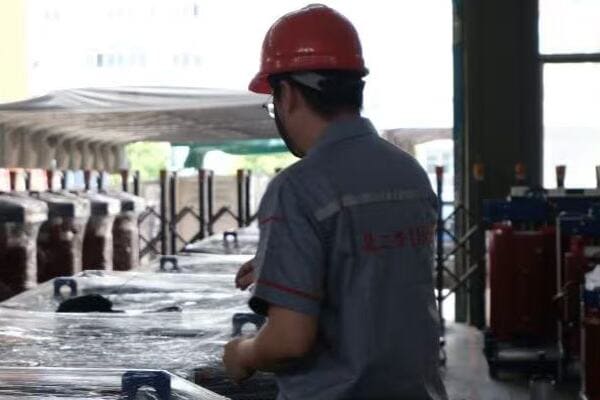
The Evolution of Transformers for Future Power Systems
Let’s explore how transformers are adapting to meet the challenges of smart grids and renewable energy:
1. Smart Monitoring and Diagnostics
Advanced features include:
- Real-time condition monitoring
- Predictive maintenance capabilities
- Integration with grid management systems
I recently worked on a project implementing smart transformers in a large urban substation. The ability to monitor transformer health in real-time and predict potential issues before they occur has dramatically improved reliability and reduced maintenance costs.
2. Bidirectional Power Flow Management
Adapting to renewable energy:
- Handling variable inputs from solar and wind
- Supporting grid-to-vehicle and vehicle-to-grid technologies
- Balancing distributed energy resources
3. Enhanced Efficiency and Sustainability
New developments in:
- Advanced core materials for reduced losses
- Biodegradable and fire-resistant insulating fluids
- Compact designs for urban environments
4. Grid Stability and Power Quality
Addressing new challenges:
- Active harmonic mitigation
- Dynamic voltage regulation
- Fault ride-through capabilities
Here’s a table summarizing the evolution of transformers:
| Aspect | Traditional Transformers | Smart Transformers |
|---|---|---|
| Monitoring | Periodic manual checks | Continuous real-time monitoring |
| Power Flow | Unidirectional | Bidirectional |
| Efficiency | Standard materials | Advanced low-loss materials |
| Grid Support | Passive | Active with voltage control |
| Data Capability | Limited | Extensive data analytics |
In my experience, the transition to smart transformers is revolutionizing grid management. I recently led a project to upgrade a regional grid with smart transformer technology. The improved visibility into grid conditions and the ability to dynamically adjust to changing loads has significantly enhanced overall system efficiency and reliability.
One fascinating aspect of modern transformers is their role in integrating renewable energy sources. In a recent wind farm project, we implemented transformers with advanced voltage regulation capabilities to handle the variable output of wind turbines. These transformers could adjust their parameters in real-time, ensuring stable power delivery to the grid despite fluctuating wind conditions.
The challenge of managing electric vehicle (EV) charging loads is driving innovation in transformer design. I’m currently working on a project to develop fast-response distribution transformers for EV charging stations. These transformers can handle rapid load changes and provide the high power needed for fast charging while maintaining grid stability.
Energy storage integration is another area where transformers are evolving. In a microgrid project for a remote community, we used specialized transformers that could interface with both battery storage systems and traditional power sources. This hybrid approach significantly improved the community’s energy resilience and reduced reliance on diesel generators.
The concept of solid-state transformers is an exciting development I’m closely following. These transformers use power electronics to perform voltage conversion, offering benefits like reduced size, improved efficiency, and enhanced control capabilities. While still in the early stages, solid-state transformers could revolutionize how we manage power in smart grids.
Cybersecurity is becoming an increasingly important consideration in smart transformer design. In a recent project for a critical infrastructure facility, we implemented transformers with advanced security features to protect against potential cyber threats. This included encrypted communications and secure firmware update processes.
The role of artificial intelligence in transformer operation is an area of rapid development. I’m involved in a research project exploring the use of AI algorithms for predictive maintenance of transformers. By analyzing vast amounts of sensor data, these systems can detect subtle changes that might indicate developing issues, allowing for proactive maintenance.
Lastly, the environmental impact of transformers is driving innovation in materials and design. I’m excited about recent advancements in bio-based insulating fluids and recyclable materials for transformer construction. These developments are helping to make transformers more environmentally friendly throughout their lifecycle.
The future of transformers in smart grids and renewable energy systems is bright and full of innovation. As we continue to evolve our power infrastructure to meet the challenges of a changing energy landscape, transformers will play a crucial role in enabling a more flexible, efficient, and sustainable grid. From enhancing the integration of renewable sources to supporting the electrification of transportation, smart transformers are at the forefront of the energy transition, helping to shape a cleaner and more resilient power system for future generations.
Conclusion
Transformers are fundamental to modern power systems, enabling efficient transmission and safe distribution of electricity. They play crucial roles in voltage conversion, grid stability, and integrating renewable energy. As power systems evolve, transformers continue to adapt, incorporating smart technologies to meet future energy challenges.
Recent Post
Quick Message
Request A free quote
We'd like to work with you
- +86 15558785111
- chbebgroup@chbebpower.com
- +86 15558785111
What We Do
CHINA BEI ER BIAN (CHBEB) GROUP, with 218 million in registered capital, originated from Beijing Beierbian Transformer Group. Headquartered in Beijing for R&D, it operates major production bases in Nanjing and Yueqing, producing high-quality products.
Latest Post
Latest Product
Contact Us
- +86 15558785111
- chbebgroup@chbebpower.com
- +86 15558785111
BeiJing
No 3,RongJing East Road,BeiJing Economic Technological Development Area,BeiJing,China
JiangSu
No 7️Xiangfeng Road,Jiangning,NanJing,JiangSu,China
WenZhou
No.211, Wei 16 Road, Industrial Zone, Yueqing, Wenzhou, Zhejiang, China.
XiangYang Industrial Zone ,YueQing,WenZhou,ZheJiang,China


